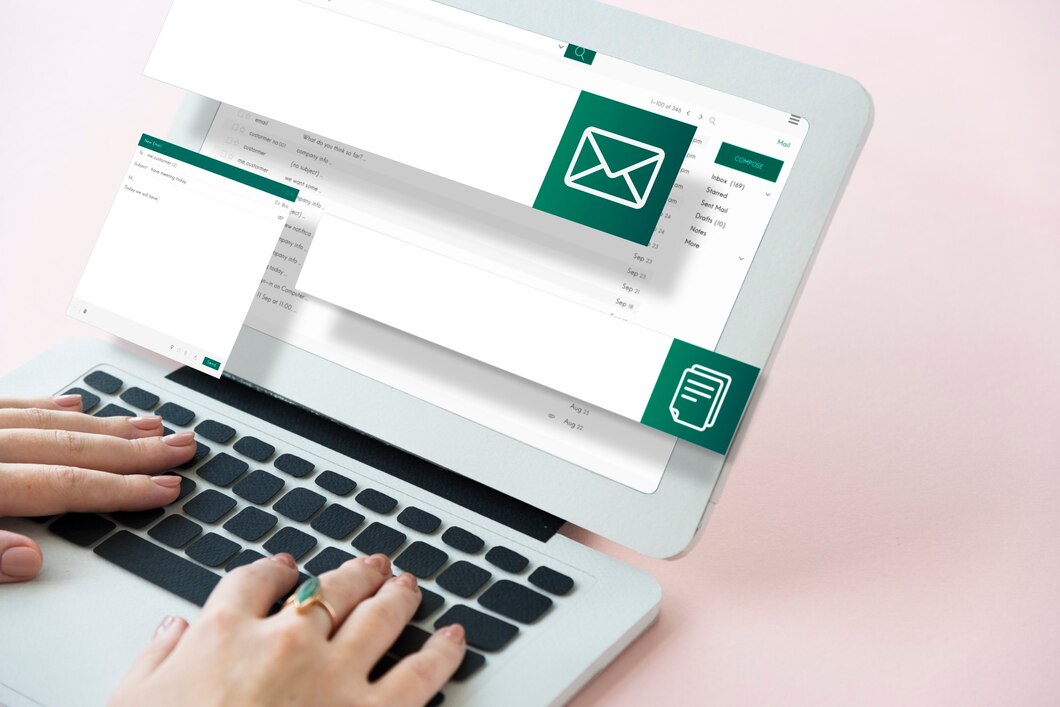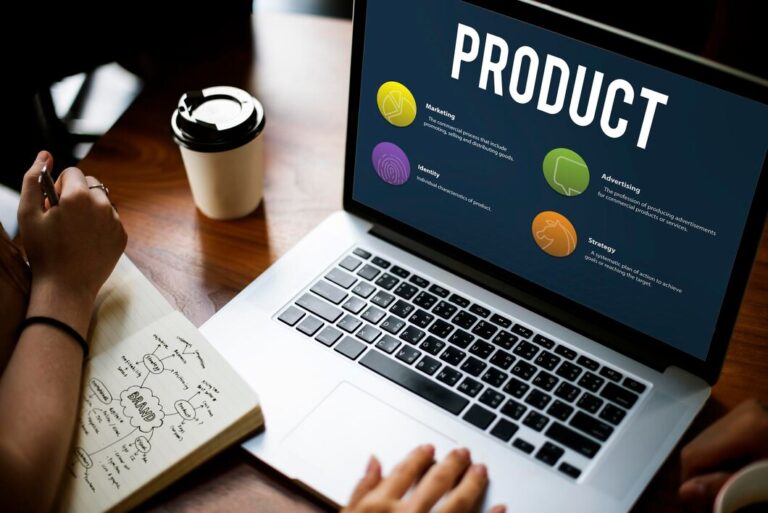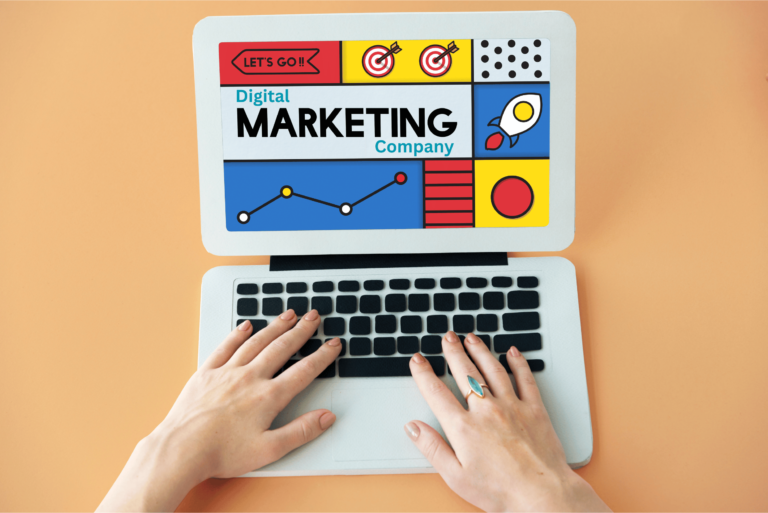10x Sales Growth with Powerful Email Marketing Tips
Struggling to convert leads into sales? Discover the secrets to skyrocketing your sales by 10x with powerful email marketing strategies! In this no-nonsense guide, we unveil the proven email marketing tactics we used to achieve an incredible 80% increase in email revenue. Learn how to craft irresistible email campaigns that engage your audience, nurture leads, and drive sales like never before. Whether you’re a seasoned marketer or just starting out, this post equips you with everything you need to unlock the full potential of email marketing and finally crack the sales growth code.
1 – Segmentation
Segmentation is the practice of dividing your email list into smaller, targeted groups based on specific criteria such as demographics, behavior, or preferences. Here’s a detailed breakdown of segmentation and its importance in email marketing:
- Demographic Segmentation: This involves dividing your email list based on demographic factors such as age, gender, location, income level, occupation, or education. For example, a clothing retailer might segment their list by gender to send tailored promotions for men’s and women’s apparel.
- Behavioral Segmentation: Behavioral segmentation involves grouping subscribers based on their past interactions with your emails, website, or products. This could include factors such as purchase history, browsing behavior, email engagement (opens, clicks), or stage in the customer journey (new subscribers, loyal customers). For instance, an online bookstore might segment their list based on the genre of books customers have purchased or their reading preferences.
- Preference Segmentation: Preference segmentation focuses on subscribers’ preferences, interests, or hobbies. This could include factors such as product preferences, content topics, communication frequency, or preferred communication channels. For example, a travel agency might segment their list based on travel interests such as beach vacations, adventure travel, or cultural tours.
- Lifecycle Stage Segmentation: Lifecycle stage segmentation divides subscribers based on where they are in the customer lifecycle, such as new subscribers, active customers, inactive customers, or lapsed customers. Each segment may require different messaging and offers to nurture them towards conversion or retention.
- VIP or Loyalty Segmentation: VIP or loyalty segmentation identifies and rewards high-value customers or loyal subscribers with exclusive offers, discounts, or perks. This can help nurture customer loyalty and encourage repeat purchases.
Segmentation is essential in email marketing for several reasons:
- Relevance: Segmented emails are more relevant to recipients’ interests and preferences, increasing the likelihood of engagement and conversions.
- Personalization: Segmentation allows for personalized messaging and offers tailored to each segment, enhancing the customer experience.
- Higher Engagement: Segmented emails typically have higher open rates, click-through rates, and conversion rates compared to non-segmented emails.
- Improved Deliverability: Sending targeted emails to segmented lists reduces the likelihood of emails being marked as spam or unsubscribed from, improving deliverability and sender reputation.
- Better ROI: By targeting the right audience with the right message, segmentation can lead to a higher return on investment (ROI) for your email marketing campaigns.
2 – Compelling Subject Lines
Crafting compelling subject lines is crucial for capturing your audience’s attention and increasing open rates. Here’s a detailed breakdown of what makes subject lines compelling:
- Personalization: Including the recipient’s name or other personalized details in the subject line can make it more engaging. Personalization makes the email feel tailored to the individual, increasing the likelihood of them opening it. For example, “John, Exclusive Offer Just for You!”
- Urgency: Creating a sense of urgency can prompt recipients to open the email right away rather than putting it off. Phrases like “Limited Time Offer” or “Ending Soon” convey urgency and encourage immediate action.
- Curiosity: Intriguing subject lines that pique the recipient’s curiosity can compel them to open the email to satisfy their curiosity. Tease an interesting offer or piece of information without giving away too much. For example, “Unlock the Secret to…”
- Benefit-driven: Clearly communicate the benefit or value proposition of opening the email. Let recipients know what they stand to gain by engaging with your message. For example, “Discover How to Save 50% on Your Next Purchase!”
- Clarity and Conciseness: Keep subject lines concise and to the point. Avoid being overly wordy or vague, as this can lead to confusion or disinterest. Aim for clarity to ensure recipients understand the purpose of the email. For example, “Don’t Miss Out: Flash Sale Today Only!”
- Emotional Appeal: Appeal to recipients’ emotions to elicit a response. Emotional subject lines can be more memorable and persuasive. Use language that evokes feelings of excitement, curiosity, fear of missing out (FOMO), or happiness. For example, “Get Ready to Feel Amazing!”
- Relevance: Ensure that your subject line is relevant to the content of the email and the interests of your audience. Tailor subject lines to specific segments of your email list to increase relevance and engagement. For example, “Your Weekly Digest: Top Articles for Marketers.”
- A/B Testing: Experiment with different subject lines through A/B testing to identify which ones resonate best with your audience. Test variations in wording, length, tone, and formatting to optimize open rates over time.
- Avoiding Spam Triggers: Be mindful of avoiding spam triggers in your subject lines, such as using excessive punctuation, all caps, or spammy language. Spam filters may flag emails with subject lines that appear spam-like, leading to lower deliverability rates.
- Consistency: Maintain consistency between your subject line and the content of your email. Ensure that the subject line accurately reflects what recipients can expect to find inside the email to build trust and credibility.
3 – Quality Content
Creating high-quality content is essential for engaging subscribers, building trust, and ultimately driving revenue through email marketing. Here’s a detailed breakdown of what constitutes quality content in email marketing:
- Relevance: Ensure that your content is relevant to your audience’s interests, needs, and preferences. Tailor you’re messaging to address their pain points, desires, and challenges. For example, if you’re a fashion retailer, provide styling tips, trend updates, and outfit inspiration that resonates with your audience.
- Value: Deliver valuable content that educates, entertains, or informs your subscribers. Offer practical tips, how-to guides, industry insights, or exclusive information that enriches their lives or solves their problems. Providing value establishes your credibility and keeps subscribers engaged with your emails.
- Clarity and Conciseness: Present your content in a clear, concise manner that is easy for subscribers to digest. Avoid unnecessary jargon or complexity, and focus on delivering your message in a straightforward and understandable way. Use bullet points, numbered lists, and subheadings to break up the text and improve readability.
- Visual Appeal: Incorporate visually appealing elements such as images, videos, infographics, and GIFs to enhance the presentation of your content. Visuals can capture attention, evoke emotions, and make your emails more engaging. Ensure that visuals are relevant to the content and align with your brand’s aesthetics.
- Engagement: Encourage interaction and engagement with your content by including interactive elements such as polls, surveys, quizzes, or clickable calls-to-action. Encourage subscribers to share their opinions, preferences, or feedback, fostering a sense of community and involvement.
- Originality: Strive to create original and unique content that sets your emails apart from competitors and provides a fresh perspective to your audience. Avoid simply regurgitating existing content or copying from other sources. Instead, offer unique insights, experiences, or perspectives that demonstrate your expertise and creativity.
- Consistency: Maintain consistency in the quality and tone of your content across all your email campaigns. Establish a recognizable voice and style that reflects your brand identity and resonates with your audience. Consistent content helps build trust and loyalty among subscribers over time.
- Call-to-Action (CTA): Include a clear and compelling call-to-action in your content to guide subscribers towards the desired action, whether it’s making a purchase, signing up for an event, downloading a resource, or visiting your website. Make sure the CTA stands out visually and is aligned with the content’s purpose.
- Segmentation and Personalization: Tailor your content to specific segments of your email list based on demographics, preferences, or past behavior. Personalize the content by addressing subscribers by name, recommending products based on their purchase history, or providing targeted offers that match their interests.
- Testing and Optimization: Continuously test and optimize your content based on performance metrics such as open rates, click-through rates, and conversion rates. Experiment with different content formats, subject lines, visuals, and messaging to identify what resonates best with your audience and refine your content strategy accordingly.
4 – Mobile Optimization
Mobile optimization is crucial in today’s digital landscape, where a significant portion of email opens occurs on mobile devices. Here’s a detailed breakdown of mobile optimization for email marketing:
- Responsive Design: Implement responsive design techniques to ensure that your emails adapt seamlessly to various screen sizes and devices, including smartphones, tablets, and desktops. A responsive design adjusts the layout, font sizes, and images automatically based on the device’s screen size, providing an optimal viewing experience for recipients.
- Single Column Layout: Use a single column layout for your email templates to accommodate the narrow width of mobile screens. This layout ensures that content remains readable and accessible without requiring horizontal scrolling, which can frustrate mobile users.
- Clear and Concise Content: Keep your email content clear, concise, and focused to cater to the shorter attention spans of mobile users. Use short paragraphs, bullet points, and subheadings to break up text and improve readability on smaller screens. Avoid overwhelming recipients with lengthy paragraphs or excessive content.
- Large and Tappable CTAs: Ensure that your call-to-action (CTA) buttons are large enough to be easily tappable on touch screens. Use a prominent color, bold text, and sufficient white space around the CTA to make it stand out and encourage interaction. Place the CTA prominently within the email layout to increase visibility and drive conversions.
- Optimized Images: Optimize images for mobile viewing by using compressed file formats and resizing them to fit mobile screens. Large or uncompressed images can slow down email loading times and consume data for mobile users. Use alt text for images to provide context in case they don’t load properly.
- Fast Loading Speed: Prioritize fast loading times for your emails to provide a seamless user experience on mobile devices. Minimize the use of large images, unnecessary animations, or heavy HTML elements that can slow down loading times, especially for users on slower mobile connections.
- Font Size and Typeface: Use legible font sizes and typefaces that are easy to read on mobile screens. Aim for a minimum font size of 14 pixels for body text and 22 pixels for headings to ensure readability without zooming. Stick to web-safe fonts that are widely supported across different devices and email clients.
- Preview Text Optimization: Craft compelling preview text that complements your subject line and entices recipients to open your email. The preview text is displayed alongside the subject line in the inbox, providing an additional opportunity to capture attention and convey the email’s value proposition.
- Clickable Phone Numbers and Addresses: Make phone numbers, addresses, and other contact information clickable in your emails to facilitate easy access for mobile users. Hyperlinking phone numbers allows recipients to initiate calls directly from the email, while clickable addresses can open mapping apps for directions.
- Testing Across Devices and Email Clients: Test your email campaigns across various mobile devices, operating systems, and email clients to ensure consistent rendering and functionality. Use email testing tools or send test emails to yourself and colleagues to identify any issues and make necessary adjustments before sending to your subscribers.
5 – Clear Call-to-Action (CTA)
Crafting clear and compelling calls-to-action (CTAs) is essential for guiding recipients to take the desired action in your email campaigns. Here’s a detailed breakdown of how to create effective CTAs:
- Clarity: Ensure that your CTA is clear and easy to understand. Use concise language that clearly communicates the action you want recipients to take. Avoid ambiguity or vague wording that may confuse or discourage recipients from clicking. For example, use phrases like “Shop Now,” “Subscribe Today,” or “Download Now” to clearly indicate the intended action.
- Visibility: Make your CTA stand out visually within the email layout to grab recipients’ attention. Use contrasting colors, bold fonts, or buttons to make the CTA visually distinct from the surrounding content. Position the CTA prominently within the email, ideally above the fold, so it’s immediately visible without scrolling.
- Placement: Strategically place your CTA where recipients are most likely to see it and take action. Consider placing the CTA at the beginning or end of the email, as well as within the body content where it’s contextually relevant. Experiment with different placements through A/B testing to identify the most effective location for your CTA.
- Action-oriented Language: Use action-oriented language that encourages recipients to act immediately. Phrases like “Buy Now,” “Learn More,” or “Get Started” prompt a sense of urgency and motivate recipients to click on the CTA. Use verbs that inspire action and convey the benefits of taking the desired action.
- Benefit-focused: Highlight the benefits or value proposition of clicking on the CTA to incentivize recipients to take action. Clearly communicate what recipients stand to gain by clicking, whether it’s accessing exclusive content, saving money with a special offer, or solving a problem with your product or service. Focus on the WIIFM (What’s In It For Me) factor to appeal to recipients’ interests and needs.
- Responsive Design: Ensure that your CTA is optimized for mobile devices with touch-friendly buttons and large enough text size for easy tapping. Test your email templates across various screen sizes and devices to ensure that the CTA remains visible and clickable on mobile devices without any issues.
- Limited Choices: Avoid overwhelming recipients with too many CTAs in a single email, as this can dilute the message and reduce click-through rates. Focus on one primary CTA that aligns with the email’s primary goal, whether it’s making a purchase, signing up for an event, or downloading a resource. Limiting choices helps streamline the decision-making process for recipients and increases the likelihood of conversion.
- FOMO (Fear of Missing Out): Create a sense of urgency or scarcity around your CTA to encourage immediate action. Use phrases like “Limited Time Offer,” “Act Now,” or “While Supplies Last” to convey urgency and motivate recipients to click before they miss out on the opportunity. Incorporating time-sensitive incentives or countdown timers can further enhance the FOMO effect and drive conversions.
- Consistent Branding: Ensure that your CTA aligns with your brand’s voice, tone, and visual identity to maintain consistency across your email campaigns. Use branded colors, fonts, and imagery to reinforce brand recognition and trust. Consistent branding helps build familiarity and reinforces the connection between your emails and your brand.
- Testing and Optimization: Continuously test different variations of your CTAs, including wording, design, color, size, and placement, to identify which ones resonate best with your audience and drive the highest conversion rates. Use A/B testing to compare the performance of different CTAs and optimize your email campaigns based on real-time data and insights.
6 – A/B testing Email Marketing
A/B testing, also known as split testing, is a method used to compare two or more variations of an email campaign to determine which one performs better in terms of achieving your desired outcome. Here’s a detailed breakdown of how to conduct A/B testing effectively:
- Identify the Goal: Before conducting A/B testing, clearly define the goal of your test. Determine what specific metric you want to improve, such as open rates, click-through rates, conversion rates, or revenue. Having a clear goal will help you design relevant test variations and measure success accurately.
- Select a Variable to Test: Choose a single element of your email campaign to test, such as the subject line, sender name, preheader text, email content, CTA button color, CTA text, or layout. Focusing on one variable at a time allows you to isolate the impact of that element on the performance of your email.
- Create Test Variations: Develop multiple versions of your email campaign, each with a different variation of the selected variable. For example, if you’re testing the subject line, create two or more subject lines with different wording, length, or tone. Ensure that each variation differs significantly enough to yield meaningful results.
- Randomly Assign Recipients: Randomly divide your email list into segments and assign each segment to receive one of the test variations. It’s important to ensure that the segments are large enough to generate statistically significant results. Typically, a sample size of at least a few thousand subscribers per variation is recommended for accurate testing.
- Set Test Parameters: Determine the duration of your A/B test and the sample size needed to achieve statistical significance. Depending on your email volume and frequency, tests can run for a few hours, days, or weeks. Monitor the performance of each variation throughout the test period to track progress and identify trends.
- Measure Key Metrics: Track relevant metrics for each test variation, such as open rates, click-through rates, conversion rates, revenue generated, or any other KPIs tied to your campaign goals. Use email marketing software or analytics tools to collect and analyze data in real-time.
- Evaluate Results: Once the test period is complete, compare the performance of each test variation against the predetermined goal. Determine which variation outperformed the others in achieving the desired outcome. Look for statistically significant differences in performance to ensure the reliability of your findings.
- Implement Winning Variation: Based on the results of your A/B test, identify the winning variation and implement it as the new standard for your email campaign. Incorporate the successful elements into future campaigns to improve overall performance and maximize results.
- Iterate and Test Again: A/B testing is an iterative process that allows you to continuously refine and optimize your email campaigns over time. Use insights gained from each test to inform future experiments and test new variables or hypotheses. By consistently testing and iterating, you can fine-tune your email marketing strategy for maximum effectiveness.
- Document Learnings: Keep a record of your A/B testing results, including key findings, insights, and recommendations. Documenting learnings from each test provides valuable insights for future campaigns and helps build a knowledge base for ongoing optimization efforts.
7 – Timing and frequency
Timing and frequency play a crucial role in the success of your email marketing campaigns. Here’s a detailed breakdown of how to optimize timing and frequency for maximum effectiveness:
- Know Your Audience: Understand your audience’s preferences, behavior, and time zone to determine the best times to send emails. Analyze past email performance data to identify patterns and trends in open rates, click-through rates, and conversions based on different send times.
- Test Different Send Times: Experiment with sending emails at various times of the day and days of the week to identify the optimal send times for your audience. Conduct A/B tests to compare the performance of emails sent at different times and measure the impact on key metrics such as open rates and click-through rates.
- Consider Peak Engagement Times: Consider sending emails during peak engagement times when your audience is most likely to be active and receptive to your messages. This may vary depending on factors such as industry, target audience, and geographic location. For example, sending emails during weekday mornings or early evenings when people are checking their emails before or after work may yield higher engagement rates.
- Avoid Overlapping Sends: Be mindful of not overwhelming your subscribers with too many emails in a short period. Space out your email sends to avoid competing for attention and reduce the risk of subscribers feeling bombarded or opting out of your emails. Monitor unsubscribe rates and engagement metrics to gauge the optimal frequency for your audience.
- Segmentation by Engagement Level: Segment your email list based on engagement level to tailor the frequency of emails to each segment. For example, send more frequent emails to highly engaged subscribers who regularly open and interact with your emails, while reducing the frequency for less engaged subscribers to avoid fatigue and potential unsubscribes.
- Use a Consistent Schedule: Establish a consistent sending schedule to set expectations and maintain engagement with your audience. Whether it’s sending weekly newsletters, monthly updates, or promotional emails on specific days of the week, consistency helps build trust and familiarity with your brand.
- Monitor Performance Metrics: Continuously monitor the performance of your email campaigns and adjust timing and frequency based on real-time data and insights. Track metrics such as open rates, click-through rates, conversion rates, and unsubscribe rates to gauge the impact of timing and frequency changes on campaign effectiveness.
- Take Seasonality into Account: Consider seasonal trends and holidays when planning your email marketing schedule. Adjust your timing and frequency to align with seasonal events, promotions, or sales periods that may impact your audience’s behavior and preferences.
- Respect Subscriber Preferences: Respect subscriber preferences by allowing them to choose their email frequency and preferences during the signup process. Offer options for subscribers to opt in or out of specific types of emails and adjust their frequency settings to better align with their preferences.
- Iterate and Optimize: Continuously iterate and optimize your email marketing strategy based on performance data, subscriber feedback, and industry best practices. Experiment with different timing and frequency strategies, analyze results, and refine your approach over time to maximize engagement and ROI.
8 – Personalization
Personalization in email marketing involves tailoring your messages to individual subscribers based on their preferences, behaviors, and demographics. Here’s a detailed breakdown of how to implement personalization effectively:
- Collect Relevant Data: Gather data about your subscribers through various touchpoints such as sign-up forms, website interactions, purchase history, and surveys. Collect information such as name, location, gender, age, preferences, and past interactions with your brand to inform your personalization efforts.
- Segmentation: Divide your email list into smaller segments based on common characteristics or behaviors, such as demographics, purchase history, engagement level, or interests. Segmentation allows you to send more targeted and relevant content to each group of subscribers, increasing the likelihood of engagement and conversions.
- Dynamic Content: Use dynamic content blocks within your emails to customize the message for different segments of your audience. Dynamically insert personalized elements such as the recipient’s name, recommended products, relevant content, or localized offers based on their profile and behavior.
- Personalized Subject Lines: Incorporate personalization into your email subject lines to capture recipients’ attention and increase open rates. Address subscribers by name or reference their past interactions or preferences to make the email feel more relevant and tailored to them.
- Tailored Recommendations: Provide personalized product recommendations based on each subscriber’s past purchases, browsing history, or preferences. Use data-driven algorithms to suggest relevant products or services that align with their interests and buying behavior, increasing the likelihood of conversion.
- Behavioral Triggers: Set up automated email campaigns triggered by specific subscriber actions or behaviors, such as abandoned cart reminders, post-purchase follow-ups, or re-engagement campaigns for inactive subscribers. Tailor the content and timing of these emails based on each recipient’s individual journey and interactions with your brand.
- Lifecycle Marketing: Implement lifecycle marketing strategies to personalize the customer experience at each stage of the buyer’s journey. Send targeted emails that address the specific needs and interests of subscribers based on where they are in the customer lifecycle, whether they’re new prospects, first-time buyers, or loyal customers.
- Personalized Recommendations: Leverage user data and algorithms to offer personalized recommendations for products, content, or services that align with each subscriber’s preferences and interests. Use techniques such as collaborative filtering, content-based filtering, or machine learning to analyze user behavior and make relevant suggestions.
- Interactive Content: Incorporate interactive elements such as polls, quizzes, surveys, or user-generated content to engage subscribers and gather valuable insights about their preferences and interests. Personalize the content of interactive elements based on each subscriber’s responses or interactions, creating a more engaging and tailored experience.
- Testing and Optimization: Continuously test and optimize your personalization efforts to ensure relevance and effectiveness. Monitor key metrics such as open rates, click-through rates, conversion rates, and revenue generated to evaluate the impact of personalization on your email campaigns. Use A/B testing to experiment with different personalization tactics and iterate based on the results.
9 – Engagement
Engagement tracking in email marketing involves monitoring and analyzing subscriber interactions with your email campaigns to assess their level of engagement and responsiveness. Here’s a detailed breakdown of how to track and analyze engagement effectively:
- Key Metrics: Identify key metrics to track that indicate subscriber engagement and campaign performance. These metrics typically include open rates, click-through rates (CTR), conversion rates, bounce rates, unsubscribe rates, and overall engagement metrics such as time spent reading emails or interactions with embedded content.
- Email Analytics Tools: Use email marketing platforms or analytics tools to track and measure engagement metrics for your email campaigns. Most email marketing software provides built-in analytics dashboards that allow you to monitor campaign performance in real-time and generate detailed reports.
- Open Rates: Monitor the percentage of recipients who open your emails to gauge the effectiveness of your subject lines and overall email delivery. Open rates provide insights into the level of interest and engagement among your subscribers.
- Click-Through Rates (CTR): Track the percentage of recipients who click on links or CTAs within your emails to measure their level of engagement with the content. CTR indicates the effectiveness of your email content, design, and calls-to-action in driving desired actions and conversions.
- Conversion Rates: Measure the percentage of recipients who take a desired action or complete a conversion goal, such as making a purchase, signing up for a webinar, or downloading a resource. Conversion rates provide insights into the effectiveness of your email campaigns in achieving your business objectives.
- Bounce Rates: Monitor the percentage of emails that are undeliverable or bounce back due to invalid email addresses, full inboxes, or other delivery issues. High bounce rates can indicate issues with your email list quality, sender reputation, or email deliverability.
- Unsubscribe Rates: Track the percentage of subscribers who opt out of receiving further emails from your list. Unsubscribe rates provide insights into subscriber satisfaction, content relevance, and email frequency. High unsubscribe rates may indicate that your emails are not meeting subscribers’ expectations or that your list needs pruning.
- Segmentation and Personalization: Analyze engagement metrics for different segments of your email list to identify patterns and trends among specific audience segments. Segmentation allows you to tailor content, timing, and frequency to each segment’s preferences and behaviors, increasing engagement and relevance.
- Behavioral Tracking: Implement tracking mechanisms to monitor subscriber behavior within emails, such as clicks on specific links, interactions with embedded content, or time spent reading emails. Behavioral tracking provides insights into individual subscriber interests, preferences, and engagement patterns, allowing for more personalized and targeted communication.
- Continuous Monitoring and Optimization: Continuously monitor engagement metrics for your email campaigns and use insights to optimize future campaigns for better performance. Test different variables such as subject lines, content, CTAs, timing, and frequency to identify what resonates best with your audience and drives higher engagement and conversions.
10 – Optimization for Conversions
Optimizing email campaigns for conversions involves fine-tuning various elements of your emails to encourage recipients to take the desired action, whether it’s making a purchase, signing up for a webinar, or downloading a resource. Here’s a detailed breakdown of how to optimize email campaigns for conversions:
- Clear and Compelling Call-to-Action (CTA): Craft clear, concise, and action-oriented CTAs that prompt recipients to take the desired action. Use compelling language that conveys the value proposition and urgency of clicking the CTA button. Experiment with different CTA placements, colors, sizes, and wording to optimize conversion rates.
- A/B Testing: Conduct A/B tests to compare different elements of your emails, such as subject lines, CTAs, content, visuals, and timing, to identify which variations drive the highest conversion rates. Test one element at a time and analyze the results to iterate and optimize future campaigns.
- Personalization: Use personalization tactics such as dynamic content, personalized product recommendations, and tailored messaging to make emails more relevant and engaging to individual recipients. Address subscribers by name, reference past interactions or purchases, and segment your email list to deliver targeted content that resonates with each segment.
- Compelling Content: Create high-quality, relevant, and engaging content that captures recipients’ attention and motivates them to take action. Use storytelling, persuasive language, and visual elements such as images, videos, and infographics to convey your message effectively. Highlight the benefits and value proposition of your products or services to incentivize conversions.
- Mobile Optimization: Ensure that your emails are optimized for mobile devices with responsive design, mobile-friendly layouts, and easily tappable CTAs. Test your emails across different devices and screen sizes to ensure a seamless user experience and maximize conversions on mobile.
- Landing Page Optimization: Align the content and messaging of your email campaigns with the corresponding landing pages to provide a cohesive user experience. Optimize landing pages for clarity, relevance, and ease of conversion, with clear headlines, persuasive copy, compelling visuals, and prominent CTAs.
- Social Proof and Trust Signals: Incorporate social proof elements such as customer testimonials, reviews, ratings, endorsements, and trust badges into your emails to build credibility and trust with recipients. Highlight positive experiences from satisfied customers to reassure hesitant prospects and encourage conversions.
- Urgency and Scarcity: Create a sense of urgency or scarcity in your emails by leveraging limited-time offers, exclusive promotions, flash sales, or countdown timers. Encourage recipients to act quickly to avoid missing out on the opportunity, driving immediate conversions and impulse purchases.
- Segmentation and Targeting: Segment your email list based on demographics, preferences, purchase history, and engagement level to deliver targeted offers and messaging to each segment. Tailor your campaigns to address the specific needs, interests, and pain points of different audience segments, increasing the likelihood of conversion.
- Continuous Optimization: Monitor key performance metrics such as conversion rates, click-through rates, and revenue generated from email campaigns. Analyze data, identify trends, and iterate on your strategies to optimize conversion rates over time. Test new tactics, track results, and refine your approach to maximize the ROI of your email marketing efforts.
Mastering these ten email marketing tips can significantly enhance your email campaigns and drive a substantial portion of your email revenue. By implementing segmentation strategies, crafting compelling subject lines, delivering quality content, optimizing for mobile devices, and incorporating clear calls-to-action, you can create targeted and engaging emails that resonate with your audience. Additionally, conducting A/B testing, optimizing timing and frequency, personalizing content, tracking engagement metrics, and focusing on conversion optimization are essential for continuously improving your email marketing efforts. Remember, success in email marketing comes from understanding your audience, delivering value, and refining your strategies based on data and insights. By following these tips, you can maximize the effectiveness of your email marketing campaigns and achieve impressive results in terms of engagement, conversions, and revenue generation.
Email marketing fuels sales growth. Personalize, engage, profit.







